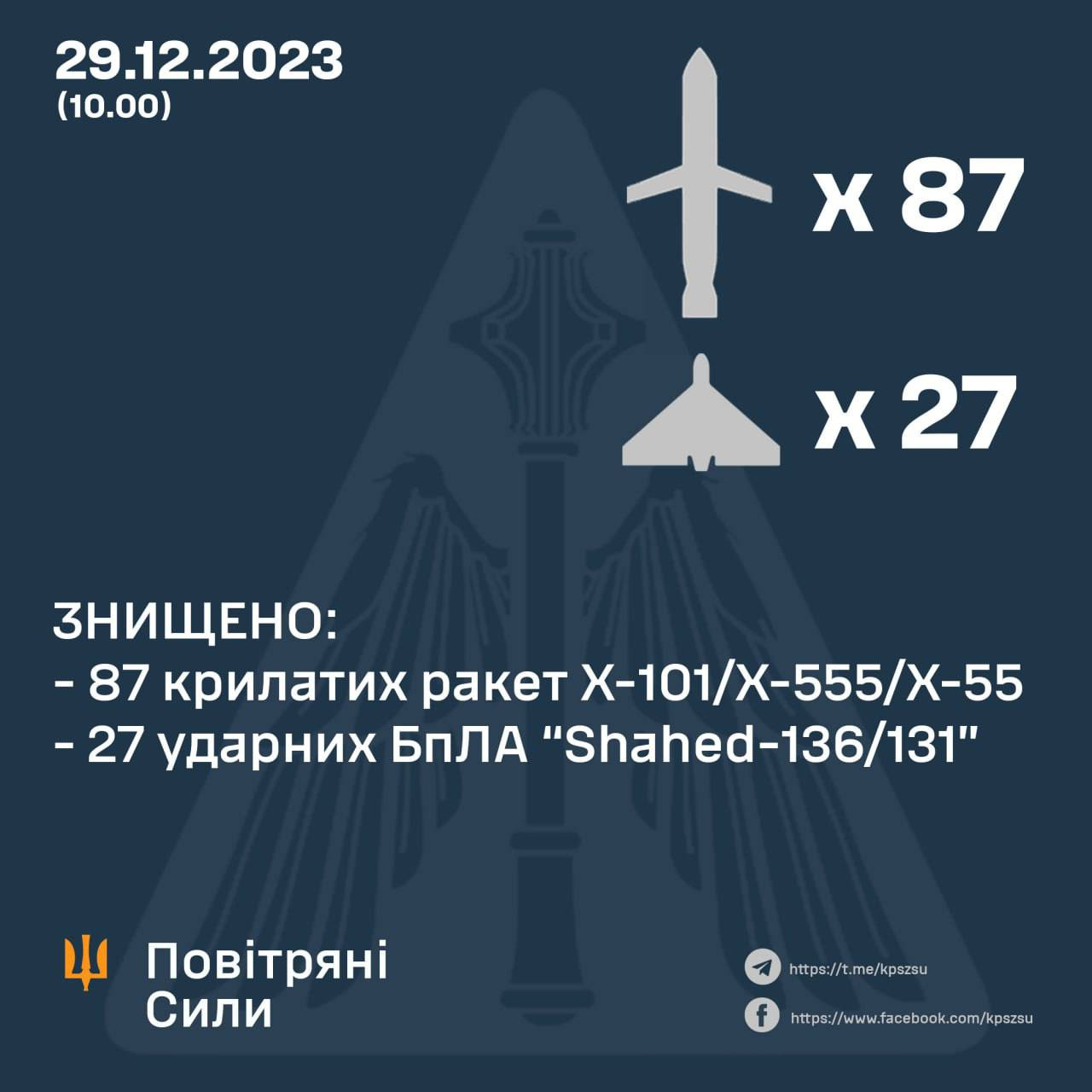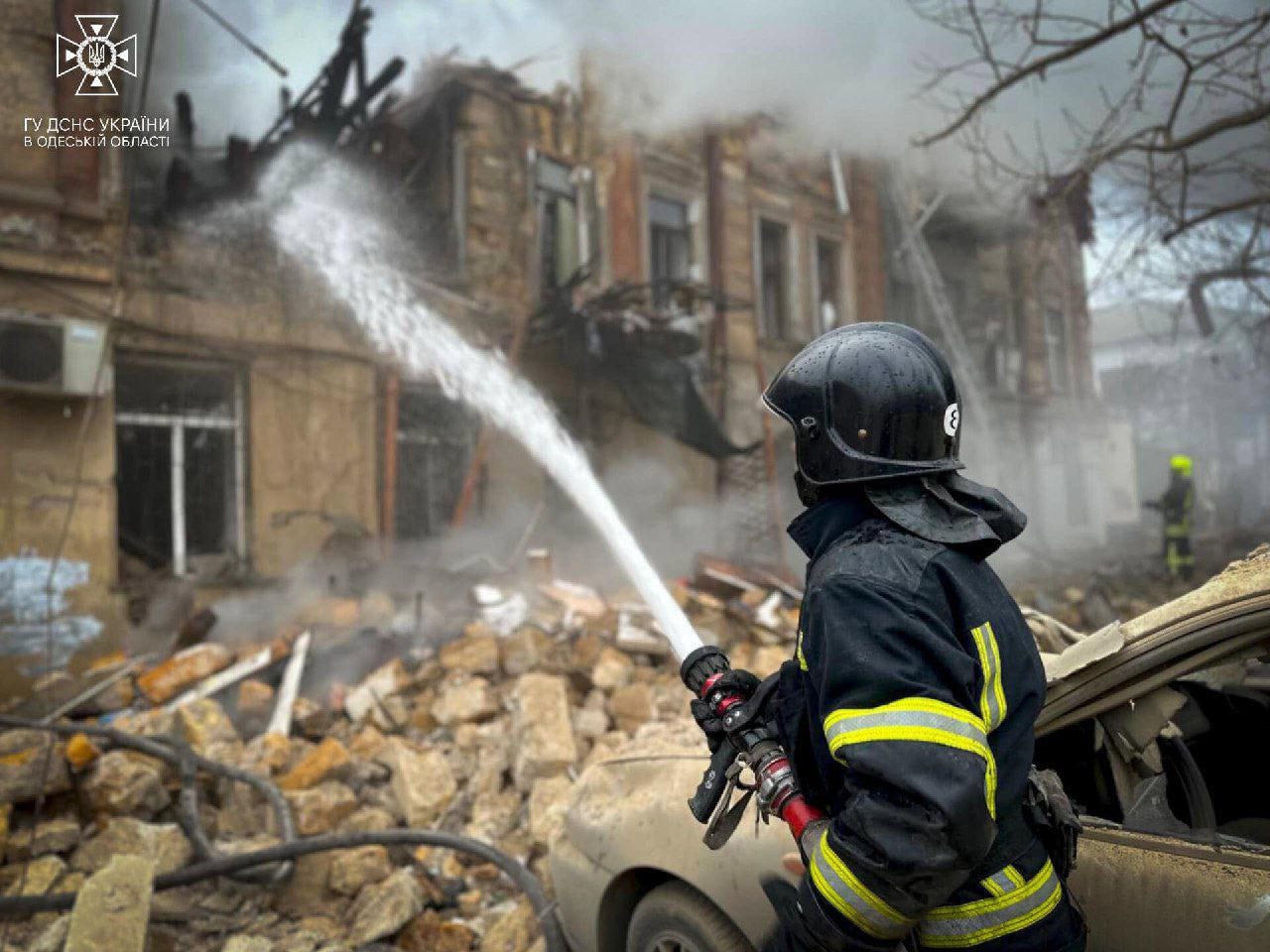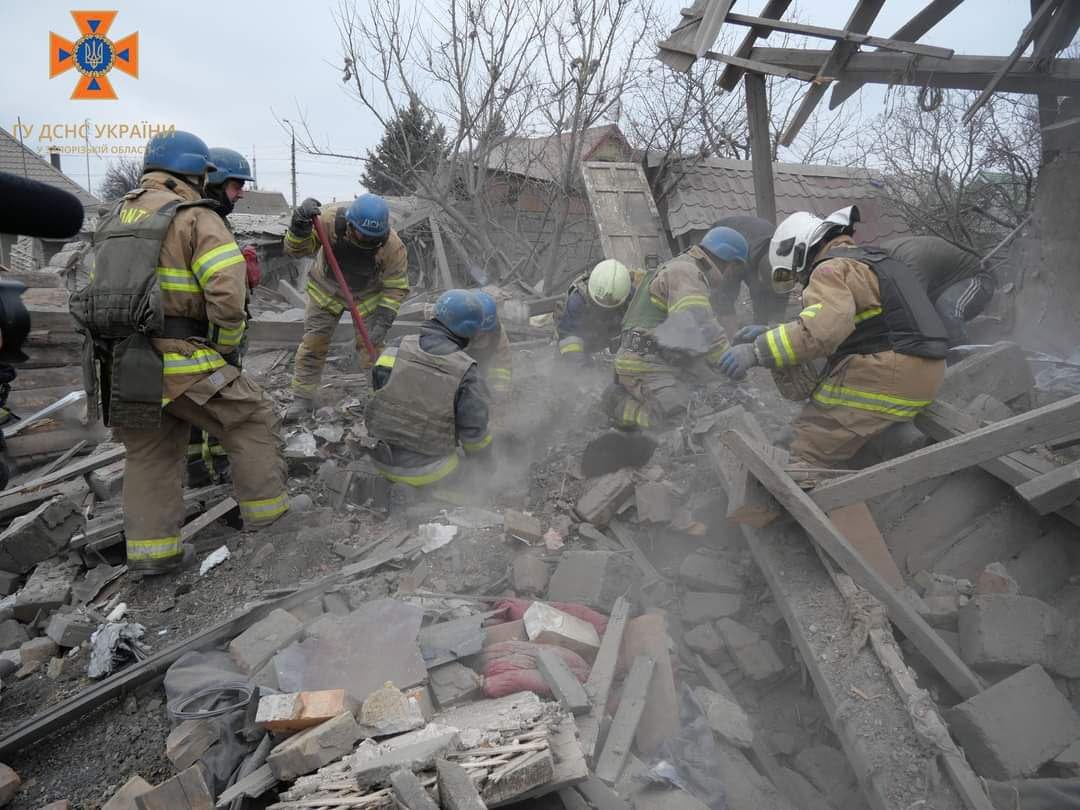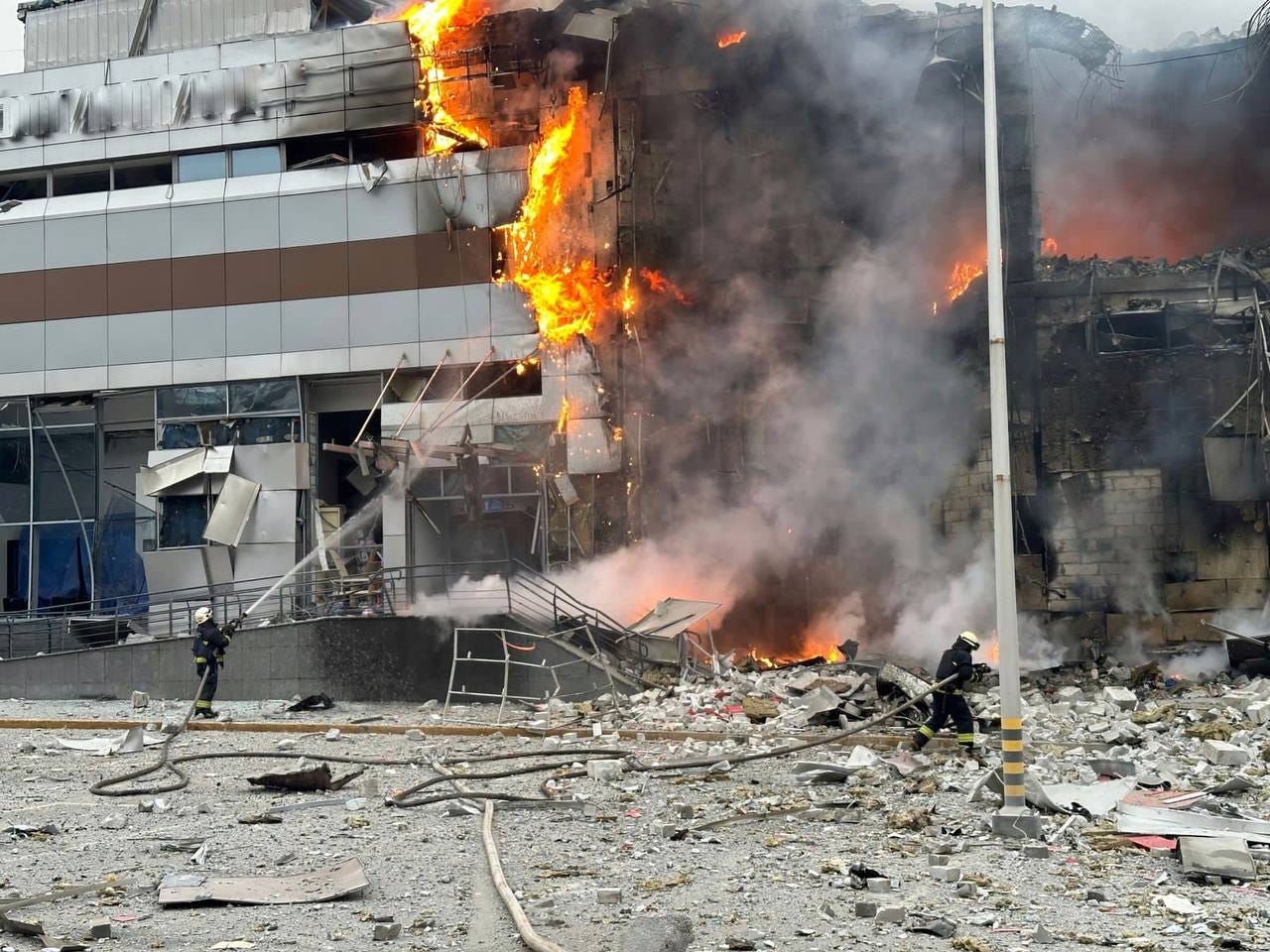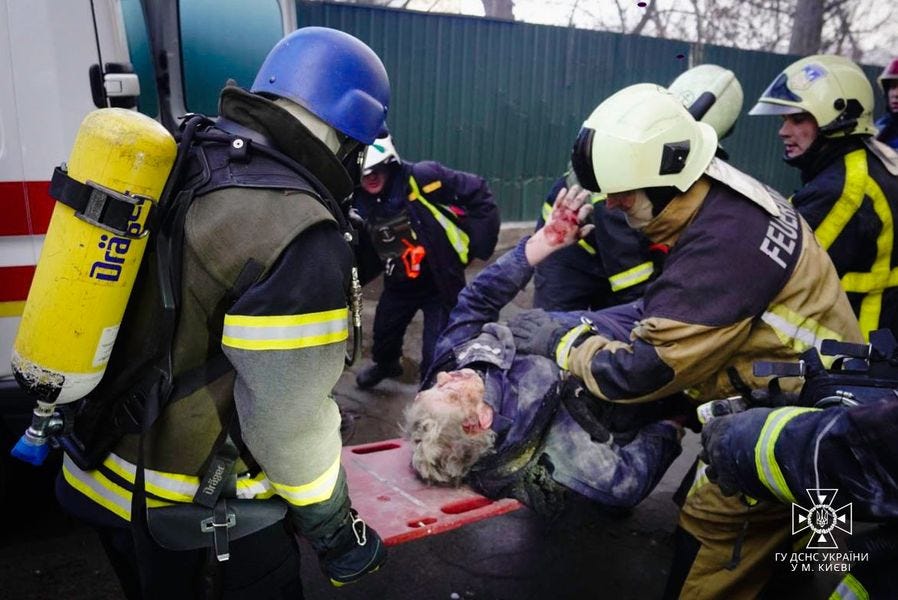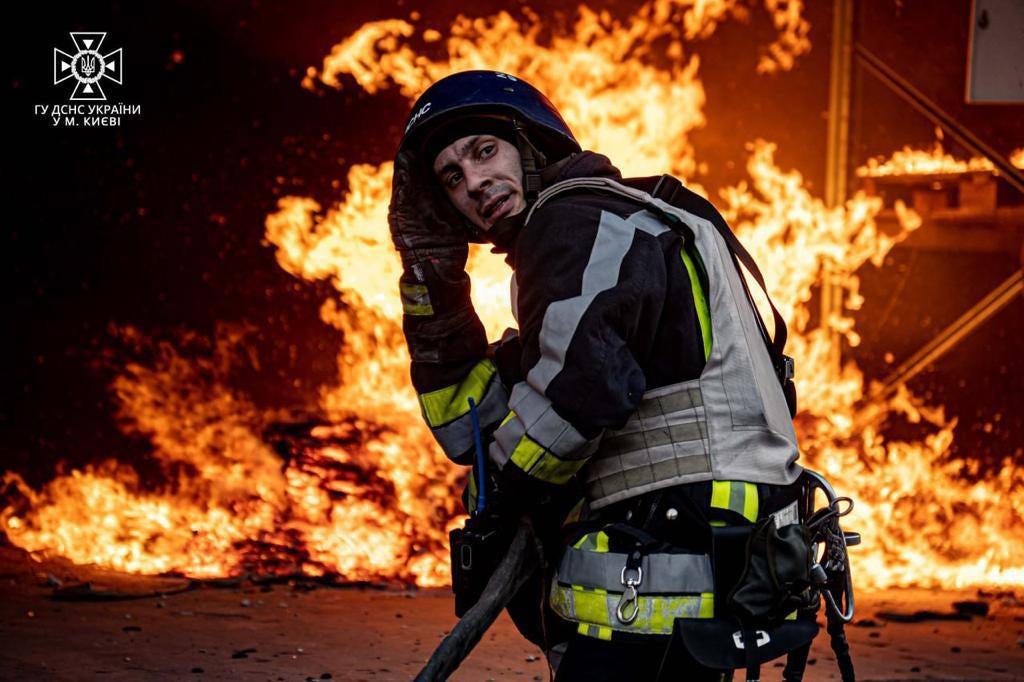Slava Ukraini! For the past six months I have provided a daily draft for the Ukraine War Brief Podcast collecting news from over 40 sources daily much of which ends up in the Ukraine War Written Brief. While this is going through a period of transition I will make this Draft available here for those who wish to keep up with events on a daily basis.
INSIDE UKRAINE
ALONG THE CONTACT LINE
The Khortytsia operational-strategic group is responsible for the Kup’yans’k, Lyman, and Bakhmut axes, in the northeastern part of Ukraine.
Nothing to report.
The Tavria operational-strategic group is responsible for the Avdiivka, Mar’inka, Shaktars’ke, and Zaporizhzhia axes, in the central-eastern and southeastern part of Ukraine.
Nothing to report.
The Odesa operational-strategic group is responsible for Kherson, Qırım, (also known as Crimea) and the Black Sea
Russians drastically reduced the use of guided bombs in the south after the destruction of Su-34
Operational Command South announced that Russian aviation drastically reduced the use of guided bombs in the south after Ukrainian air defense destroyed enemy Su-34 fighter-bombers.
Thus, over the past day, Russians carried out one air strike using 4 guided bombs on Krynky on the left bank of the Kherson region.
TEMPORARILY OCCUPIED TERRITORIES
Nothing to report.
THE HOME FRONT
Massive air attack launched against Ukraine
Russia launched the most massive multi-tiered air attack on Ukraine since the beginning of the full-scale invasion attack over much of Ukraine overnight on Dec. 29 and into this morning with the all clear not being sounded until 09:32.
The occupiers used a variety of types of ballistic missiles, air-launched cruise missiles, and Shahed UAVs to target civilian targets. A total of 158 missiles and UAVs were fired against Ukraine; 87 missiles and 27 Shaheds were shot down by Ukrainian air defence.
Russia hit residential buildings, hospitals, schools, and shopping malls around the country.
— — —
Eighteen dead in one of Russia's biggest missile strikes of war, Kyiv says
Reuters reports Russia on Friday unleashed one of its biggest missile attacks on Ukraine of the war, killing 18 civilians, wounding more than 130 others and hitting residential buildings in Kyiv, the south and west of the country, officials said.
The Ukrainian foreign ministry said the vast end-of-year air assault showed there should be "no talk of a truce" with the Kremlin at a time when uncertainty hangs over the future of vital Western support for Kyiv.
"Today, millions of Ukrainians awoke to the loud sound of explosions. I wish those sounds of explosions in Ukraine could be heard all around the world," Foreign Minister Dmytro Kuleba said, urging allies to continue with long-term military aid.
NATO member Poland's military said an unidentified aerial object had entered its airspace from neighbouring Ukraine and been tracked by its air defences until its signal disappeared.
"Russia attacked with everything it has in its arsenal... Approximately 110 missiles were fired, most of which were shot down," President Volodymyr Zelenskiy said on Telegram messenger.
Below is a collage of photos of the aftermath from the State Emergency Service of Ukraine
THE RUSSIAN FEDERATION / OCCUPIED BELARUS
Russia defies the Geneva Convention and recruits Ukrainian POWs to fight against Ukraine
The Institute for the Study of War in its Dec. 28 Russian Offensive Campaign Assessment stated that Russia has deployed a battalion formed of Ukrainian prisoners of war (POWs) to the frontline in Ukraine, further confirming a myriad of apparent Russian violations of the Geneva Convention on POWs.
Russian propaganda outlets reported on Dec. 28 that soldiers from the “Bogdan Khmelnitsky” battalion, formed of Ukrainian POWs and subordinated to the Donetsk People's Republic (DNR) Ministry of Internal Affairs “Kaskad” formation, took part in their first engagement against Ukrainian forces near Urozhaine, western Donetsk Oblast.
Russian media had previously reported on October 27 that the battalion recruited around 70 Ukrainian POWs from penal colonies in Russia and sent them to train before deploying to the western Donetsk Oblast area in early November. ISW continues to assess that the use of Ukrainian POWs in the “Bogdan Khmelnitsky” battalion is likely a violation of The Geneva Convention on POWs, which prohibits the use of POWs in military activities on the side of the power that has captured them and states that:
“no POW may at any time be sent to or detained in areas where he may be exposed to the fire of the combat zone” and shall not “be employed on labour which is of an unhealthy or dangerous nature.”
NEWS WORLDWIDE
Poland says Russian rocket likely to have entered its airspace
General Maciej Klisz, operational commander of Polish armed forces stated that a Russian missile appears likely to have entered the airspace of NATO-member Poland on Friday, a Polish general said, after an unidentified aerial object was spotted in the early morning hours amid a heavy Russian attack on Ukraine overnight Reuters reports.
The general said the object most likely left Polish airspace after spending less than three minutes over the country's territory and went back over Ukraine.
"The entire flight path over Polish territory was being monitored," Klisz told reporters. "At the moment, the scenario that I am recommending is that the missile left Poland's airspace."
General Klisz also said the missile had flown 40 kilometres (25 miles) into Poland and that no action was taken against it.
Germany Expects EU Deal on Ukraine Aid Package, Even Without Hungary
Germany expects European Union member states to pass their next Ukraine support package either way, even if Hungary should continue to block an unanimous decision, Bloomberg reports.
EU leaders have been looking for ways to get around Budapest’s intransigence after talks over the €50 billion ($55 billion) package for the government in Kyiv broke down at a summit in mid-December.
A potential back-up option that has been floated is having member states funnel money to Kyiv outside of the EU budget process, an option Hungarian Prime Minister Viktor Orban signalled may be viable. The proposal would involve national guarantees from member states to raise funding in the markets should Hungary continue to block the review of the EU’s long-term budget at an extraordinary summit on Feb. 1.
Speaking at a regular government news conference in Berlin, Foreign Ministry spokesman Christian Wagner said Chancellor Olaf Scholz’s coalition government will provide military support for Ukraine worth €8 billion in 2024 and Berlin will continue to “campaign vigorously” for the adoption of the bigger EU aid package worth €50 billion early next year.
“The EU will also continue its support for Ukraine, in any case. The EU-26 will of course also be able to act. But I don’t want to speculate now on how such support could be organised. This also requires further consultation in Brussels.”
— Christian Wagner, German Foreign Ministry spokesman
Russia faces mighty obstacle in western LNG sanctions
U.S. sanctions pose a major obstacle to Russia's plans to increase exports of seaborne liquefied natural gas (LNG) to offset the decline in pipeline gas exports to Europe, analysts said, as expectations mount of delays to a flagship project, Reuters reports.
The world's fourth largest LNG producer after the United States, Qatar and Australia, Russia has an ambition to increase its share of the global market to around a fifth from 8% now by tripling its output to more than 100 million metric tons by 2030-35.
But whereas Moscow has successfully diverted oil exports, once intended for western Europe, to China and India, in the face of sanctions, the impact of restrictions on LNG is more severe because of the relatively small number of tankers that can carry LNG and Russia's lack of access to technology and finance.
U.S. sanctions, which Russia has said reflect Washington's desire to eliminate rivals to its LNG, have already resulted in Novatek declaring force majeure on supplies from the Arctic LNG 2 project, industry sources told Reuters last week.
Fearing a backlash from the sanctions, foreign shareholders suspended participation in the project, renouncing their responsibilities for financing and for offtake contracts for the plant, the daily Kommersant reported on Monday.
Ukrainian and Hungarian diplomats are preparing a meeting between Zelenskyy and Orbán
The head of the Office of the President, Andrii Yermak reported that Ukrainian and Hungarian diplomats are working to organise a meeting between President Volodymyr Zelenskyy and Hungarian Prime Minister Viktor Orbán.
Yermak had a telephone conversation with Hungarian Foreign Minister Péter Szijjártó.
According to him, a meeting between the two countries' leaders is possible in the "near future". In addition, Yermak and Szijjártó discussed the prospects of Ukraine's European integration.
A critical review of Academic Russian studies in the West
A new study by researchers from the University of Illinois, University of California, Berkeley and VoxUkraine suggests that many top Western universities continue to promote biassed and distorted narratives about Russia in their Slavic studies programs.
Western universities by and large continue to imprint into students Russian “greatness” or “unique culture”, offering not only many more courses on Russia than on other countries in the region but also propagating Moscow-centric narratives. This take fails to portray the real Russia – an empire that wreaks havoc around the globe but is corrupt and weak behind the macho facade.
The cost of imprinting this “great Russia” narrative comes in things big and small: businessmen selling weapon parts to Russia or limiting the use of Starlink in Ukraine, politicians trying hard to “save Putin’s face”, philosophers urging Ukraine to surrender, and even the Pope praising imperialist tsars to Russian youth. In light of how much pain Russia causes in Ukraine and elsewhere, all of these things are absurd and cruel but they are consistent with the thinking that Russia must be respected because it is “great”. Sadly, universities continue to breed new generations of Russia-Verstehers.
One course suggests that “church politics and inter-Christian conflicts play a major role in the politics of contemporary Ukraine”. While there indeed were tensions between Catholic and Orthodox churches in the 16th-19th centuries in Ukraine, starting from the 20th century and definitely in modern Ukraine this is no longer true. The only “church conflicts” that are present in Ukraine today are the tensions between the anti-Ukrainian Russian orthodox church controlled by KGB/FSB and other Ukrainian confessions.
Yet another course describes Ukraine as a “30-year-old nation” and “a colonial addendum of Poland, Russian Empire, and the USSR”, overlooking the fact that the modern Ukrainian nation was formed in the 19th – 20th centuries, in the same way as the majority of European nations. Indeed, Ukrainian president Leonid Kravchuk in 1992 received state symbols from the government-in-exile of the Ukrainian People’s Republic that was formed in the early 20th century. Ukrainians fought for their independence both in 1910s-1920s and during WWII, and this fight was inspired by the earlier Cossack state (Hetmanshchyna), which in its turn defined itself a descendant of the Rus Kingdom.
Finally, consider this course description: “In three centuries [1613-1917], [the Romanovs] transformed [Russia] from a landlocked country, inhabited largely by ethnic Russians, into a sprawling, western-oriented, multi-ethnic empire, governing well over 100 million people across some 8.6 million square miles.” This sentence is a collection of imperial myths. First, until the early 18th century the country in question was called Muscovy (Moscovia). The concept “ethnic Russians” is problematic even today, and it was non-existent in the 17th century (the territory of the European part of Russia was inhabited (and is still inhabited) by Finnish-Hungarians). The Western orientation of the Russian empire is also quite questionable – rather, it used to contradistinguish itself from the West, both in the military and cultural dimensions. Finally, being large in terms of territory and population becomes much less appealing if we remember the methods by which this “largesse” was achieved – continuous wars and genocides that last even today.
What are the sources of these pro-Russian biases in today’s academia? From our analysis and conversations with people who provided feedback on our first article, we see three main reasons: money, inertia, and ideology. Let us consider them in turn.
First, Russia invested billions of dollars into promotion of “its” literature and arts as well as its view of Eastern European history abroad. It still invests a lot of money into promoting false historical and geographic narratives: thus a history book that you buy for your child may well contain false narratives that medieval Rus and Russia is the same country, and a map may show Ukraine without Crimea or even without the territories occupied by Russia in 2022. Russia invests billions of dollars into foreign think tanks and politicians who help proliferate its point of view and describe Russia as a “force that should be respected and feared” and into political projects that help wreak havoc in Western societies. The return to Russia on these investments is the weakening of democratic countries, destruction of the international legal order, and fewer challenges to false narratives that benefit Russia.
Second, many authoritative voices are proliferating Russian propaganda (e.g. Noam Chomsky and Jeffrey Sachs). This situation is not new – for example, Bernard Shaw was writing about “hopeful and enthusiastic working class” in March 1933, when thousands of Ukrainians were dying every day from the famine engineered by the Kremlin (this massacre killed at least 3.9 million people during 1932-33). Albert Einstein praised ‘Russia’ (the USSR) for protecting Jews, although anti-semithism was the state-level policy of both the Russian Empire and the USSR. These examples illustrate the effectiveness of Russian propaganda.
Third, many intellectuals around the world (e.g. Jean-Paul Sartre) were blinded by the communist ideology proclaimed by the USSR. This ideology of freedom and ‘universal equality’ seems appealing – until you see its practical implementation. Everywhere – in the USSR, in Latin America, in China, Cambodia, or North Korea – implementation of the communist ideology resulted in dictatorships, concentration camps, mass murder, famines and wars.
MILITARY & TECH
Russians forced to equip their modern air defence systems with sandbags
In a sign that Russian air defence systems may not in fact be “all that” recent images surfacing on social media depict the utilisation of sandbags as added protection for Russia’s modern air defence system, the Tor-M2. According to an article in Defence Blog
The visuals, reportedly extracted from a video recently published by the Russian Ministry of Defense on their Telegram channel, showcase the Tor-M2 surface-to-air missile system outfitted with sandbag encasements, allegedly to enhance its defence capabilities.
The images reveal the Tor-M2’s framework tailored with specialised metal grids to accommodate sandbag reinforcement, a measure undertaken by Russian military personnel in response to the ongoing threat posed by Ukrainian kamikaze drones and HIMARS strikes.
With the persistent risk of attacks, even within Russian-held territories, their military installations have come under repeated assault by Ukrainian forces employing long-range reconnaissance and strike systems.
That’s it for today’s Draft folks if you would like to keep up with events in Ukraine daily please consider subscribing, its free!
Feel free to share this update with your friends. Heroyam Slava!






